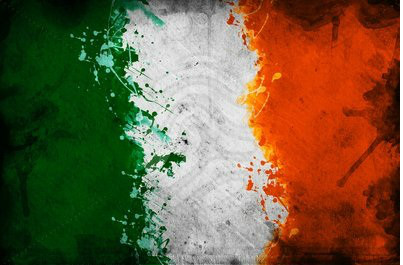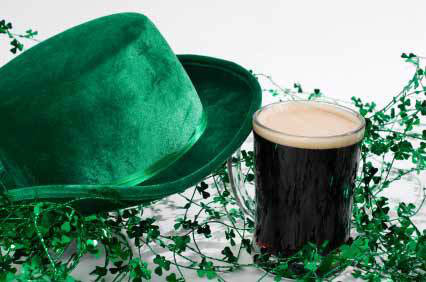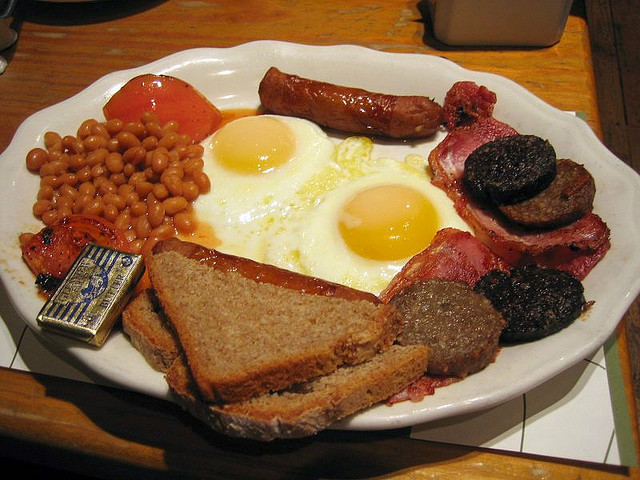Irish Food
 History of Irish food
History of Irish food
Irish cuisine can be divided into two main categories : traditional, composed primarily of simple dishes , and more modern dishes , as served in restaurants and hotels . The colcannon is a tasty dish made with potatoes and a type of wild garlic, cabbage or sprouts , leaves, like the bubble and squeak . The champ is made with mashed potatoes mixed with chopped spring onions .
Other examples of simple Irish dishes are Irish stew ( Irish Stew ) , as well as bacon and cabbage ( boiled together in water ) . The boxty , a type of potato pancake , is another traditional Irish dish. A typical dish is the Dublin coddle , where one of the ingredients is cooked pork sausage . Ireland is famous for its Irish breakfast , a fried ( or grilled ) meal generally consisting of bacon , eggs , sausage, black and white pudding , fried tomatoes and bread or potatoes for French fries can also be included.
While seafood has always been consumed by Irish food with shellfish were being incorporated recently , especially because of the high quality of products available on the Irish coast , eg Dublin Bay Prawn ( Norwegian prawns ) , oysters (many oyster festivals happen annually across the coast where oysters are served with Guinness ( Irish beer ) , the most famous occurs in Galway in September ) as well as other crustaceans . Salmon and cod are two types of fish commonly used .
Some traditional Irish breads are : soda bread ( bread that uses baking soda as an ingredient ) , wheat breads , farls soda, and blaa , a typical bagel Waterford .
There are many references to food and drink in Irish literature . Honey seems to have been quite consumed raw and used in the preparation of mead. Old stories contain references to banquets , although these may be exaggerated and provide little information about each diet. There are also references to Fulacht Fiadh ( kind of archaeological sites ) . These sites were used to cook deer, and consist in pits that were filled with water . The meat was placed in water , boiled and placed on hot stones . Many Fiadh Fulacht found through Ireland and some seem to have been used until the seventeenth century.
Excavations in areas of Viking settlement at Wood Quay , Dublin, produced a significant amount of information from the diet of the inhabitants of the city . Most of the feed consisted of cattle, sheep and pigs. Poultry, fish and seafood were also common , as well as a wide variety of native fruits and nuts, especially hazelnuts . Grass seeds as knotgrass ( type of wheat) and goosefoot ( type of grain ) were present in the diet and should have been used in the form of porridge .
In the Middle Ages until the arrival of the potato in the second half of the seventeenth century , the main occupation of the rural economy was cattle . The meat was produced in most cases , reserved for high society and nobility . The poor were fed with milk , butter, cheese and offal , followed by oats and barley . The practice of bleeding cattle and mixing the blood with milk and butter ( like they do the Maasai ) was common . A black pudding , made from blood, grain ( usually barley) and seasoning still part of breakfast in Ireland .


